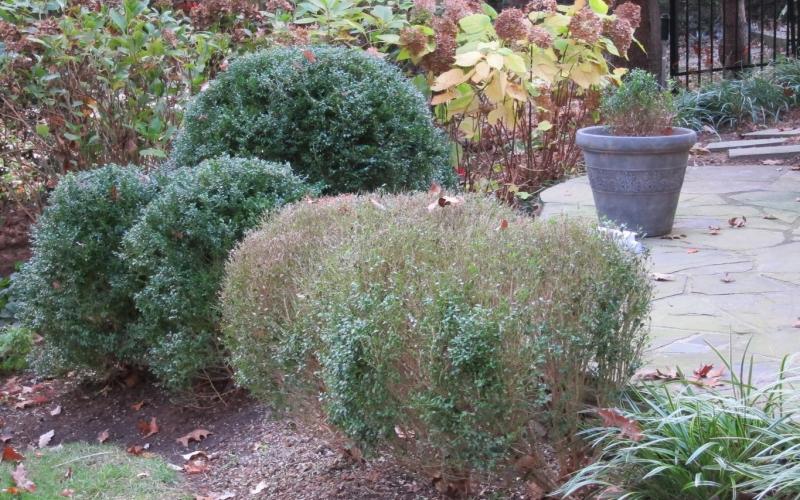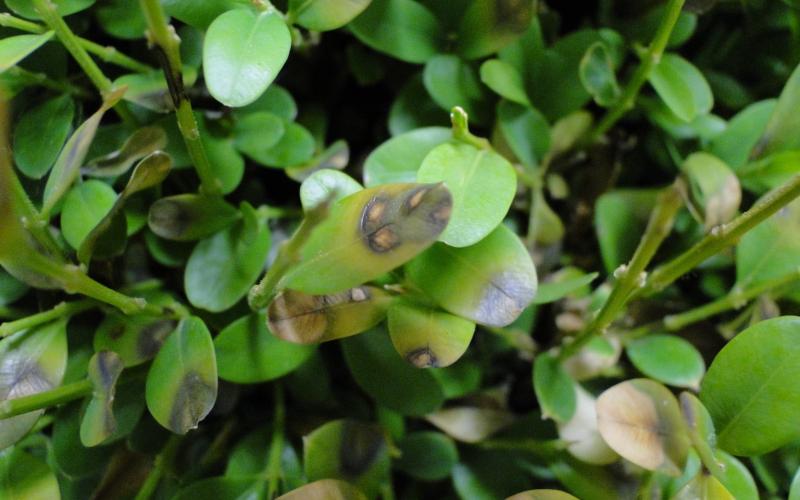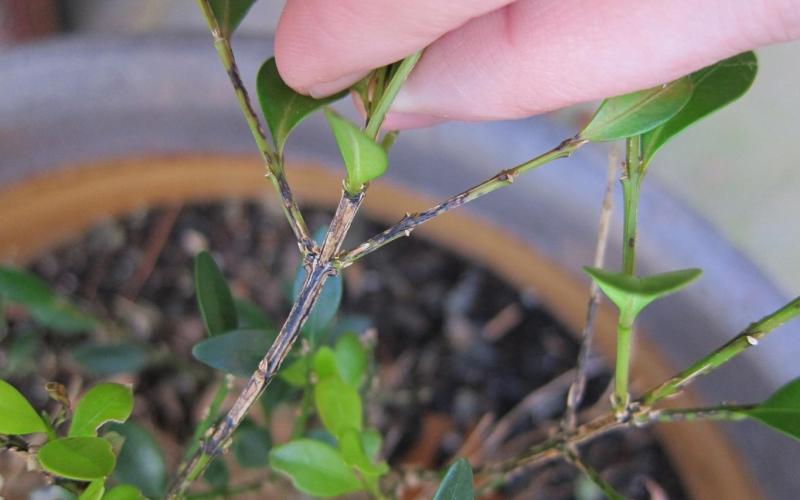Native range: First discovered in the United Kingdom in 1994, suspected origin East Asia
At Risk
Boxwood (Buxus) is the primary host for boxwood blight, but also infects Pachysandra and sweet box (Sarcococca). Boxwood is a broad-leaved evergreen (leaves do not drop in winter) shrub and is sometimes used in decorative wreaths, which can be infected with the disease.
Distribution
The boxwood blight fungus, Calonectria pseudonaviculata, was first found in the U.S. in 2011 (Connecticut) and is now known to occur in 25 states, in both landscape and nursery settings. Calonectria henricotiae has only been identified in Europe. Neither species of boxwood blight have been identified in Minnesota.
Biology
Boxwood blight is caused by two closely related fungal pathogens that can infect all above-ground plant parts, resulting in leaf lesions, leaf drop, stem lesions and severe dieback. Spread to new areas is mainly through movement of infected plants, but not all infected plants show symptoms, which can make long-distance spread difficult to manage. Once the disease is on a site, infections can develop and spread rapidly, especially when humidity is high. The pathogen can remain viable in infected debris for several years.
Identification
Symptomatic plants have leaf spots with a dark-brown border and a tan center. Infected leaves may turn brown from the tip down and fall off. Severely infected plants have multiple bare branches due to heavy leaf loss. Long thin black streaks can be seen on infected stems. Under the right environmental conditions, small, white, tuft-like clumps of fungal spores can be seen on infected leaves and stems. There are several diseases that look like boxwood blight. Diagnosis should be confirmed by submitting a sample to the University of Minnesota plant disease clinic.
Look-Alikes
Volutella leaf blight can also affect boxwood and be mistaken for boxwood blight. The University of Minnesota Extension website has information on diagnosing problems with boxwood.
Regulatory Status: Potentially Regulated
Boxwood blight is considered reportable by the United States Department of Agriculture Animal and Plant Health Inspection Service (USDA APHIS). This means that the first find of boxwood blight in each state should be sent to the National Mycology Laboratory. Discovery of boxwood blight in Minnesota could result in regulations to prevent spread and in measures to control or eradicate the disease.
What Can I Do?
The University of Minnesota Plant Diagnostic Clinic is available to test samples of unknown plant problems. Contact the Minnesota Department of Agriculture via email at reportapest@state.mn.us if you suspect you have found boxwood blight.
Smarty Plants Podcast

Discover Smarty Plants, the Minnesota Department of Agriculture's podcast that digs into the fascinating world of invasive species. Join expert guests as they share insights and solutions to protect our environment and agricultural resources. Visit Smarty Plants and start listening today.




